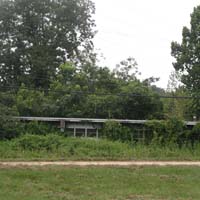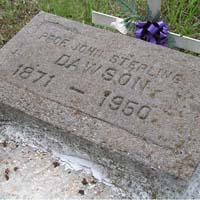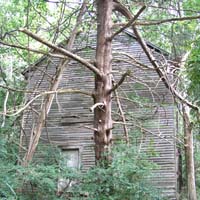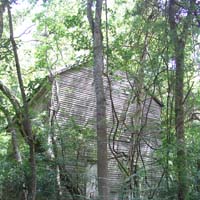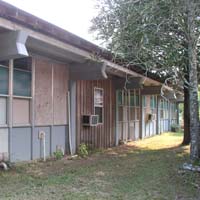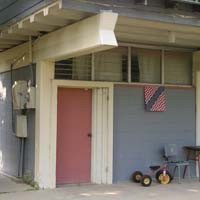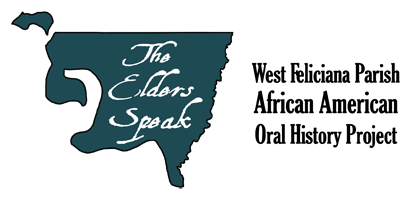
The Elders Speak: The West Feliciana Parish African American Oral History Project
By Teresa Parker Farris

Schooling & Education
Most of the interviewees had limited schooling, forced to drop out to assist their families in the fields. Many also attended shortened school terms due to the limited number of teachers assigned to the parish's African-American schools. Classes were typically held in local churches and, for decades, the Polk-Rosenwald School was the only formal educational institution serving the black community. That changed in 1951 with the opening of the John S. Dawson High School, the first institution providing secondary education to West Feliciana's African-American youth. The school closed due to Carter v. West Feliciana Parish School Board, a 1970 Supreme Court case forcing all school districts to complete full faculty and student desegregation.
Audio PlayerRosia Pate discusses going barefoot to school in the Hollywood Baptist Church.
Audio PlayerRobert Sterling explains that some instructors came from Baton Rouge via bus to teach periodically in West Feliciana Parish.
Audio PlayerEllen Hardy reflects that she enjoyed going to school despite having few clothes to wear.
Audio PlayerSallie Smith recalls that her education was limited by not having regular transportation to the closest school.

John S. Dawson High School
Named after John Sterling Dawson (1871-1950), an African American educator who began his 58-year career teaching in the Laurel Hill community, the school was the first formal institution to offer secondary education to West Feliciana Parish's black youth. Built on land once owned by Rosalee R. Noland, the school opened in 1951. In 1962, a 30-classroom building for younger students was constructed nearby, which consolidated the parish's numerous elementary schools. Both schools were closed with the start of school desegregation in 1969.
The school is located on LA Highway 66 (on the left heading north, 1.1 miles from U.S. Highway 61 turn-off).
Laurel Hill School
Laurel Hill School was constructed circa 1895 and went through the seventh grade. According to the autobiography of educator John S. Dawson, it was large enough to require an assistant teacher, Corrine Lee—who later became his wife. Until the construction of the J. S. McGehee Lodge #54 on U.S. Highway 61 in 1955, the building was also a meeting place for local Masons.
The school is located on Old Laurel Hill Road, approximately 500 yards past Rosemound Baptist Church, on the same side of the street.
Polk-Rosenwald School
In 1904, former slave Henry Polk donated four acres of land for the creation of a school serving the black youth of West Feliciana Parish. By the 1920s, the school had partnered with the Rosenwald Fund, a foundation established in 1917 by philanthropist and former Sears, Roebuck and Company president Julius Rosenwald. Polk-Rosenwald was one of the more than 5,300 African American schools funded by Rosenwald throughout the 15 southern states. For much of its history, the school offered first- through eighth-grade instruction; however, by the mid-1960s, classes ended at the sixth grade. No longer a school, the structure is today the home of Henry Polk's descendants.
The church is located at 9780 Jones Vaughn Creek Road (from U.S. Hwy 61 go east on LA Hwy 10 for 10.2 miles; left onto Jones Vaughn Creek for 5.2 miles).



